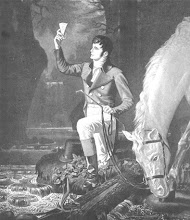I won't go into any great detail about Hunter - the story is long and rich, and I'll help you get to the best sources in a minute. Suffice it to say that Dard Hunter (1883-1966) was an American Renaissance man. He was not only a designer in the Arts & Crafts Movement in the early decades of the 20th century, but also a private press printer, paper historian and author, collector and museum director. His travels around the world helped uncover and pass along the indigenous traditions of papermaking throughout the world. He was bound and determined to reignite interest - artistically and commercially - in handmade paper in the United States.
View Larger Map
It was in Lime Rock, Conn., where he and his partners set up what they hoped would become the first commercial mill along the banks of the Salmon Fells Kill in an abandoned factory that once made railroad wheels. He brought not only all the equipment he would need from a handmade paper mill in England, but an entire English papermaking family as well.
Papermaking commenced in 1930, but the dream of a real mill never came to pass for Hunter. The mill languished for years, finally closing for good in 1950. The buildings were swept away by the flood of 1955, well-remembered by many residents of the area.
Hunter's career is well worth exploring. There is even an organization called The Friends of Dard Hunter. Here are some links to pursue the story.
Friends of Dard Hunter
Robert C. Williams American Museum of Papermaking
The Crane Insider Blog
Dard Hunter Studios
Ohio University Libraries
By His Own Labor, Biography of Dard Hunter
Following are photographs from the Lime Rock Mill. I am indebted, as always, to Cindy Bowden, director of the Robert C. Williams American Museum of Papermaking in Atlanta, for these photos.
Dard Hunter

The Lime Rock Mill

The papermaking Robertson family from England

Cotton rags being sorted for papermaking

This beater was used to turn rags into pulp; hence the term, beaten to a pulp!

Papermaking in progress
Our next installment will explore the connection between the first hand papermaker and the last, along The Paper Trail.


No comments:
Post a Comment